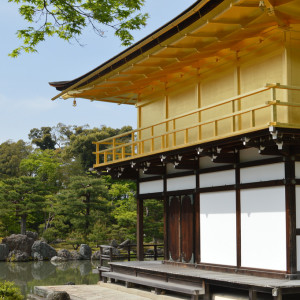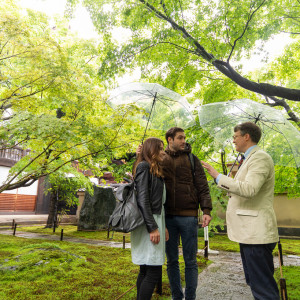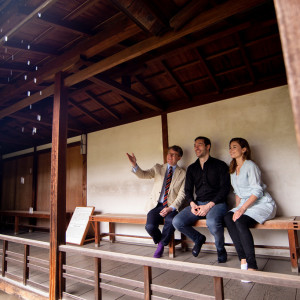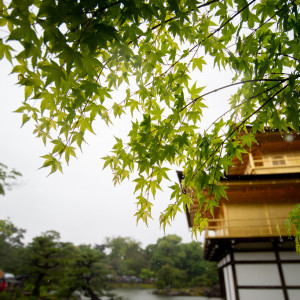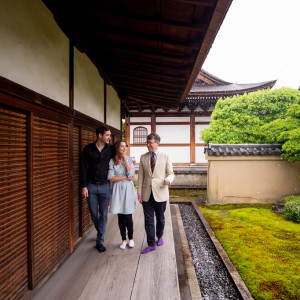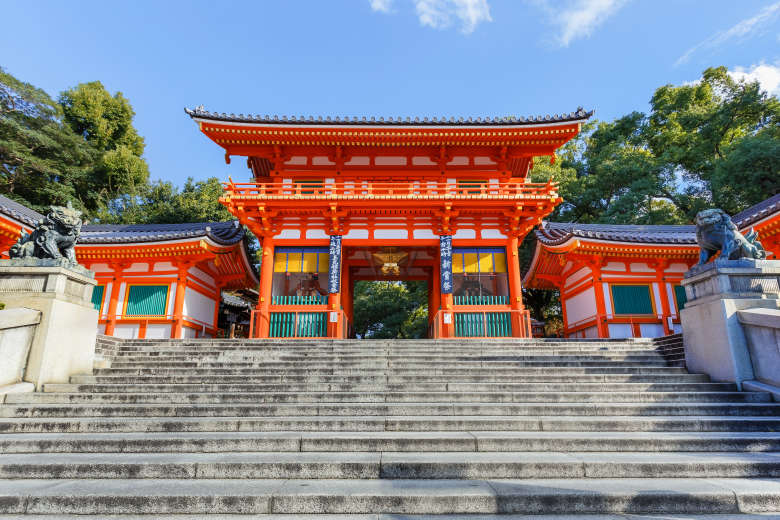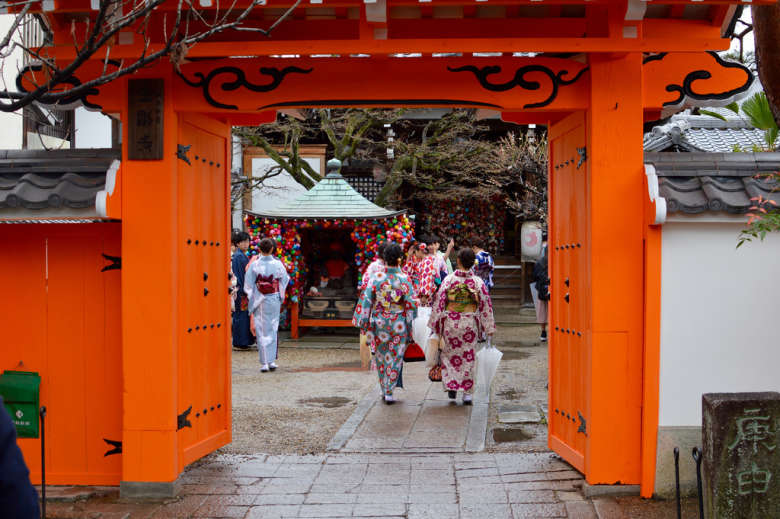Tour Details
- Duration
- 3 hours
- Product Type
- Tour
- Venues
-
- Golden Pavilion
- Ryoan-ji
- Ninna-ji
Select a date
Tour Description
Garden and landscape design is an art form that has helped define the aesthetics of Japan for centuries. By knowingly shaping their gardens, both emperors and nobles have recreated miniature landscapes with a level of precision and idealization that has made garden design a staple of Japanese culture. With its high ratio of well-preserved temples, Kyoto has always been the perfect environment for seeing a wide variety of garden styles. During our three hour walking tour we will focus on garden design during the Muromachi period, which saw a flourishing of Japanese culture, including the creation of Zen Buddhism.
Exploring the Golden Pavilion
We begin this walk at the dazzling Kinkaku-ji (the Golden Pavilion). This Zen Buddhist temple was in fact first used as a private villa by Shogun Ashikaga Yoshimitsu who purchased the land and transformed it into his home in the 14th century. The lush gardens allow us to delve into villa garden design during the Muromachi period, which ran from approximately 1337 to 1573. Aside from dissecting the various natural elements used to create the gardens, we'll also discuss how these spaces were used for contemplation and entertainment, and how these uses changed as the space transformed from private villa to Buddhist temple (a subject we explore further on our Synchronized Spirituality: Shinto & Buddhism tour).
Ryoanji Temple Visit
Moving on, we'll hop on the bus to two important Kyoto attractions and excellent examples of Zen rock gardens. The Karesansui Garden at Ryoan-ji is a prime example of dry Zen gardens, giving great contrast to the water used at Kinkaku-ji. The stylized landscape created from gravel and rocks represents an alternative garden type from the Muromachi Period and exemplifies the type of design one finds at Zen Buddhist temples.
Ninna-ji, our final Kyoto garden destination, gives us the means to compare earlier landscape design against the later Muromachi period. The covered walkways of the Goten, former residence of the head priest, were modeled on an Imperial style and feature painted sliding doors that mirror the surrounding landscape. Ninna-ji contains both dry gardens and gardens with water features, tying together the principles we've discussed during our walk and serving as a suitable stop to end our walk.
Take Aways
At the end of this tour, we will come away with a deeper understanding into how Japanese gardens and landscape reflect a wider philosophy and culture. Hungry? Check out our Kyoto Food Tour.
FAQ
Is it okay to tip my guide in Japan?
Yes. Context clients generally tip anywhere from 10-25% of the purchase price of a personal service such as this, depending on the quality of the experience and their tipping habits.
Are there any other fees associated with this tour?
There may be nominal site entrance costs or other fees, like bus fare, that are not included in the price of the tour. It is a good idea to have some cash on hand for these.
Is this tour wheelchair accessible?
Some parts of the tour are not accessible to wheelchair users: Ryoan-ji stone garden is not accessible at all and only a small part of the Golden Pavilion gardens are wheelchair accessible.
Experts
Where You'll Start
–
116 Reviews
Reviews can only be left by Context customers after they have completed a tour. For more information about our reviews, please see our FAQ.
Robin was very knowledgeable and courteous. We’d definitely use her services again.
Michael david
Jun. 4, 2024
Karin was informative and kind. She did a great job tailoring the tour to our young kids, keeping them engaged. Lovely tour, highly recommend!
Eric
Jun. 3, 2024
These are of course fantastic sites to see when visiting Kyoto, but the tour was also particularly memorable due to our guide John. His long years in Japan, his humor, his artistic sensibility, knowledge, and his willingness to discuss aspects of his experiences living here really made it that much more of an interesting,enjoyable, special experience for us.
Daniel
May. 28, 2024
